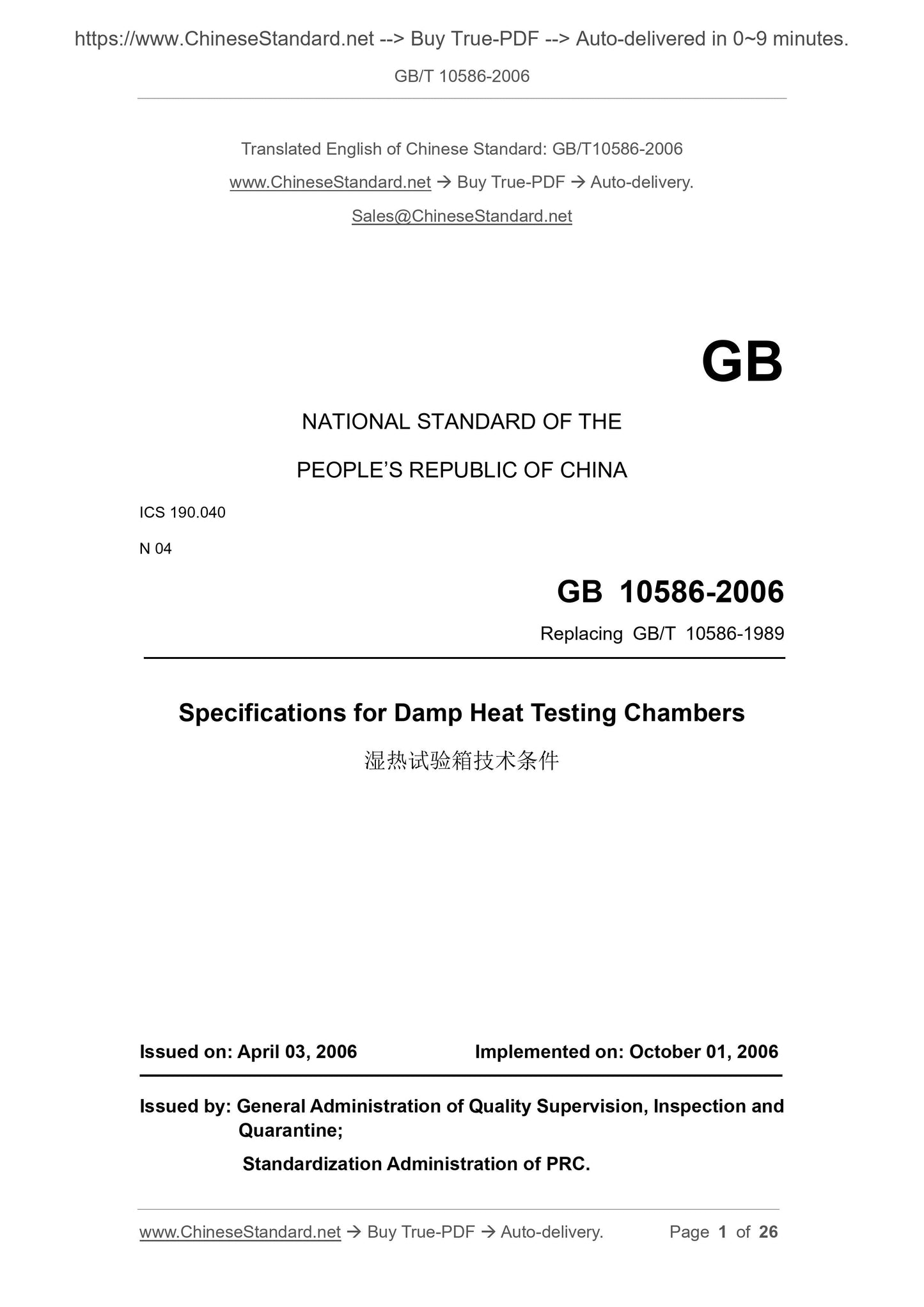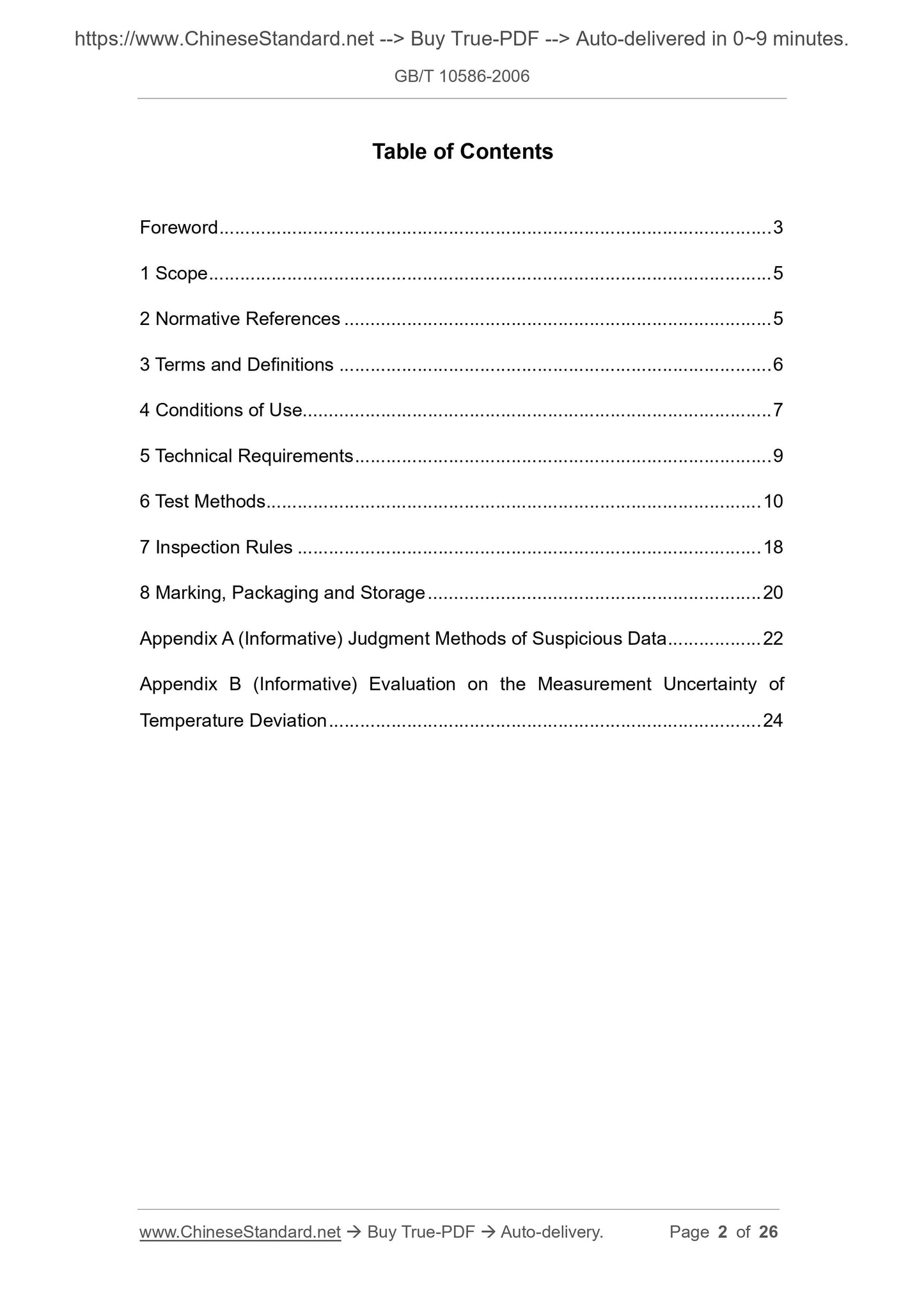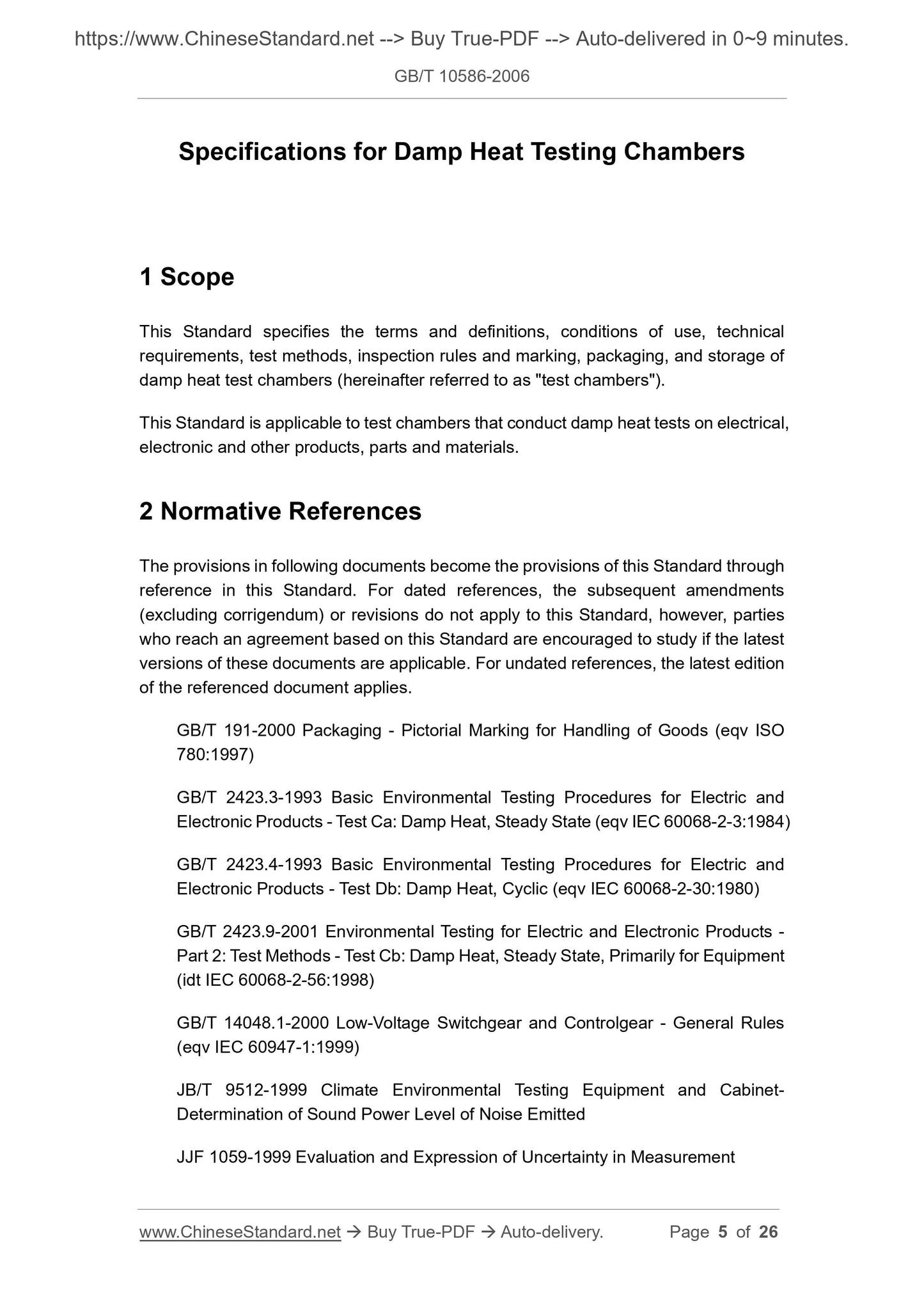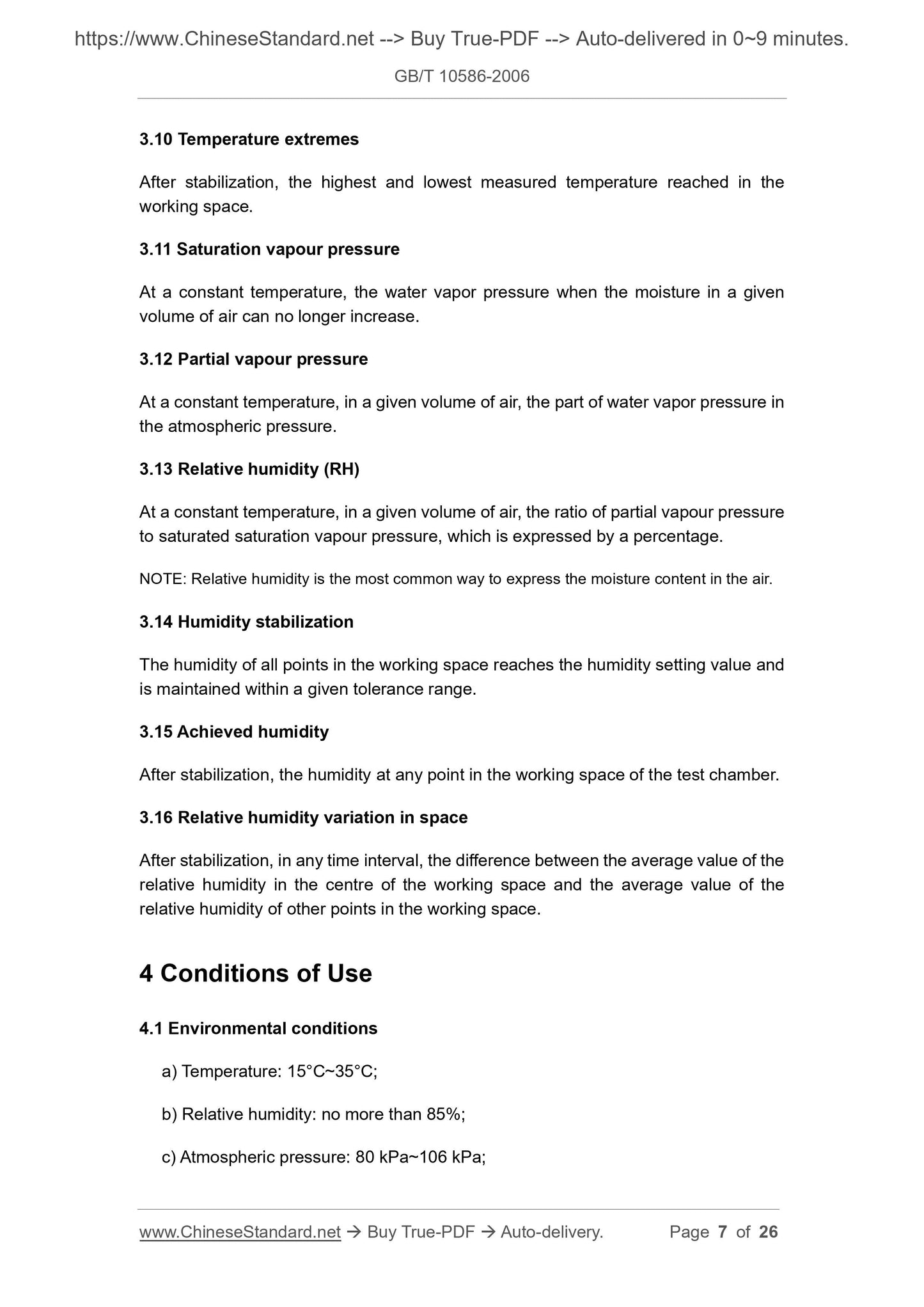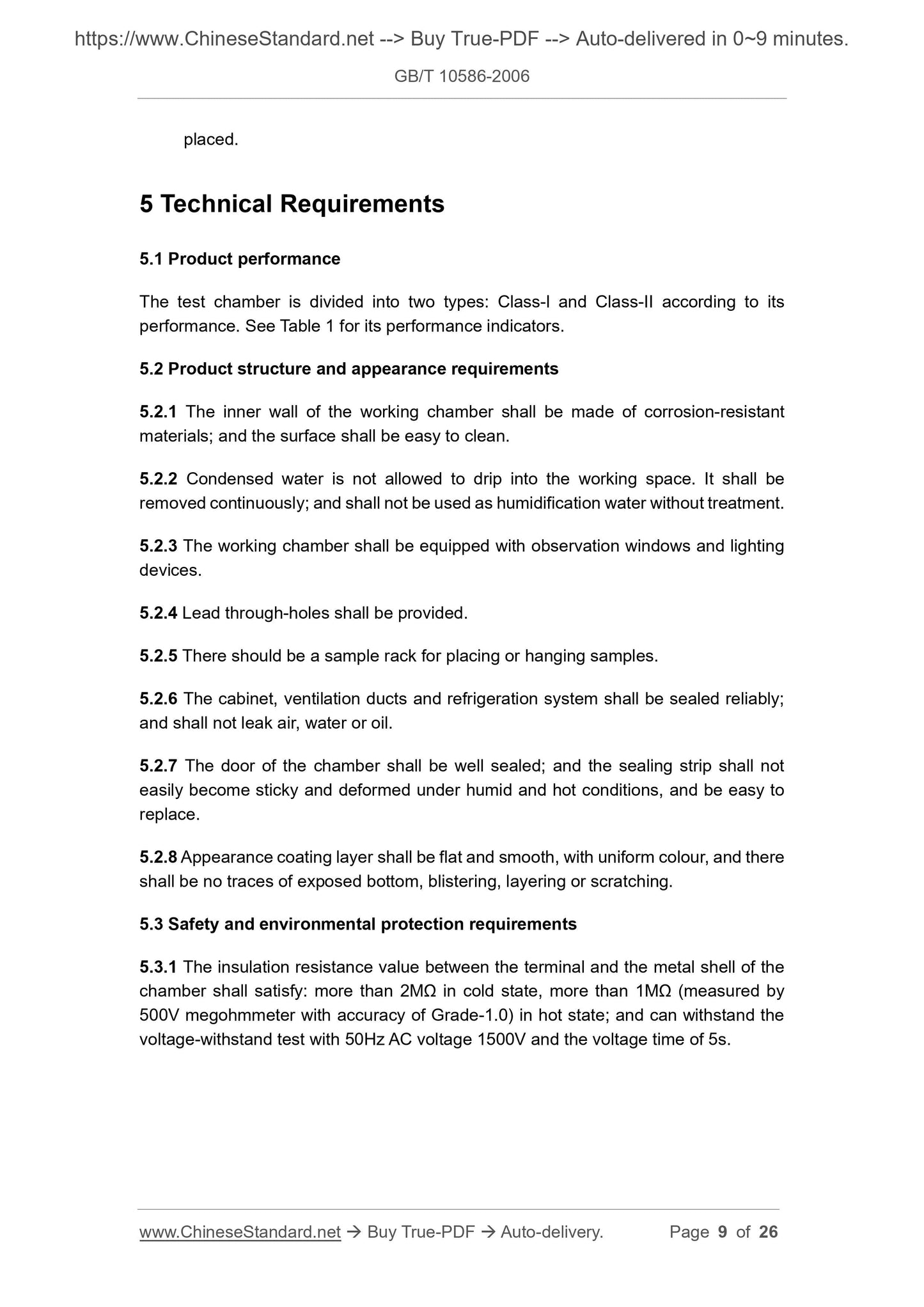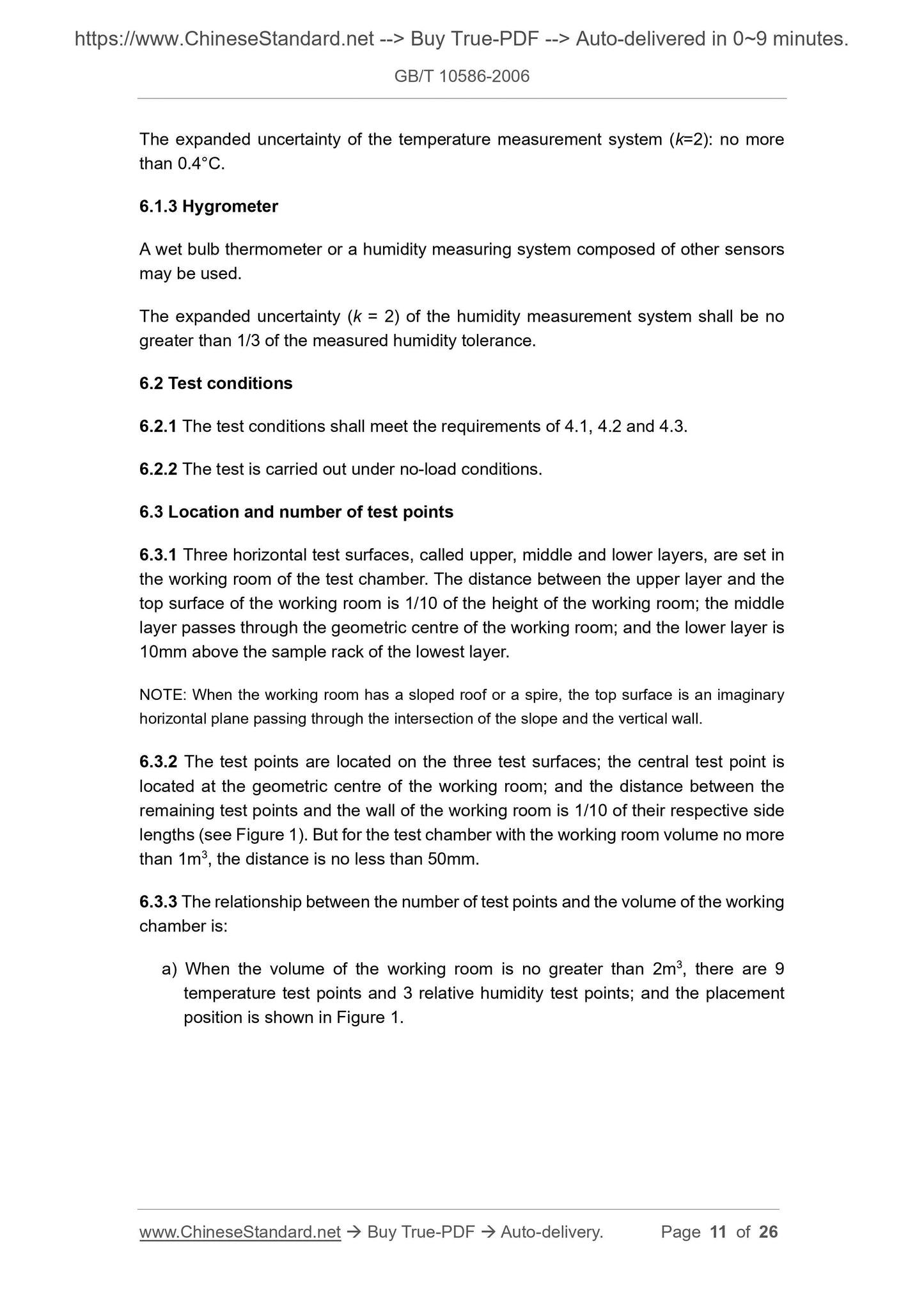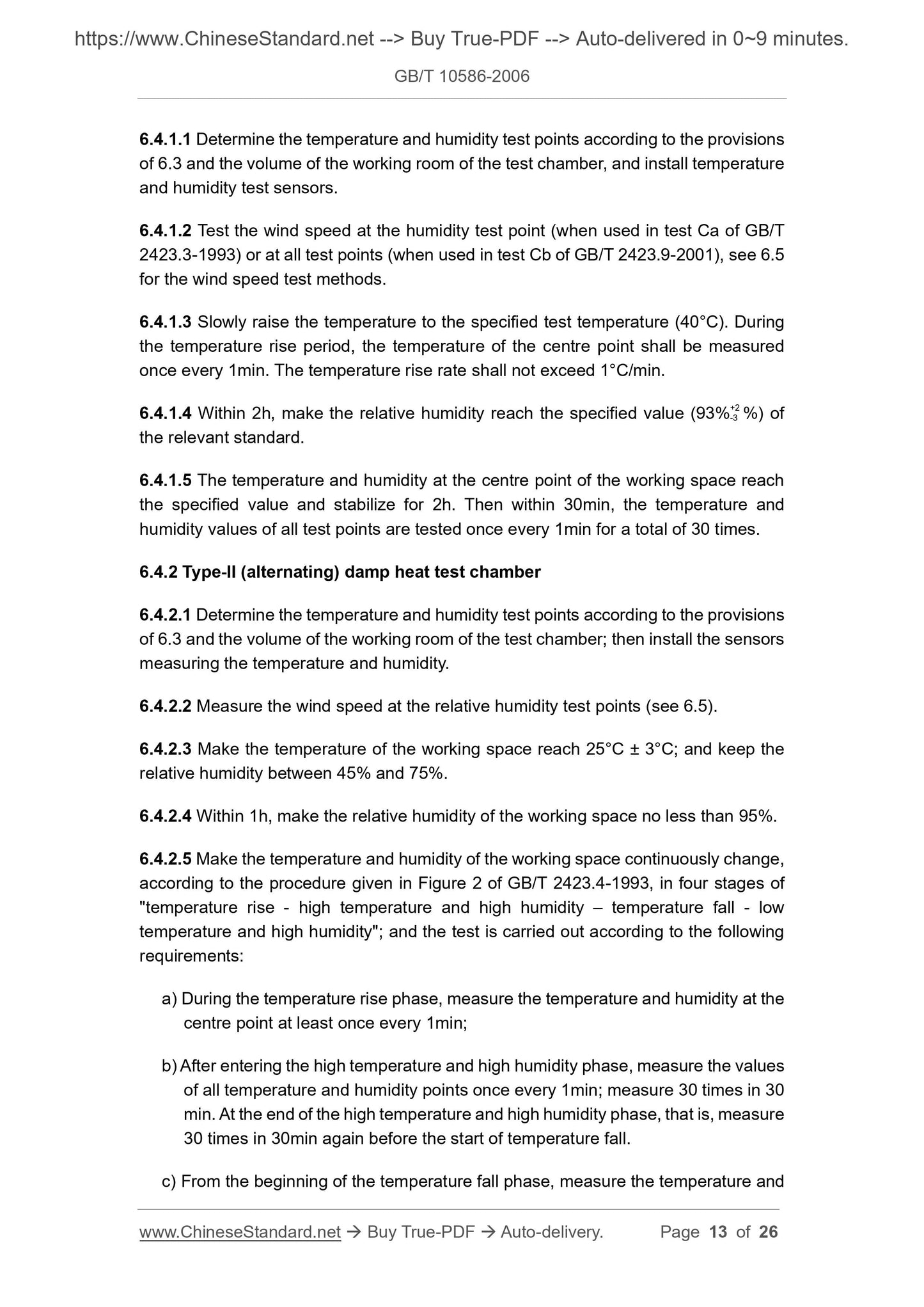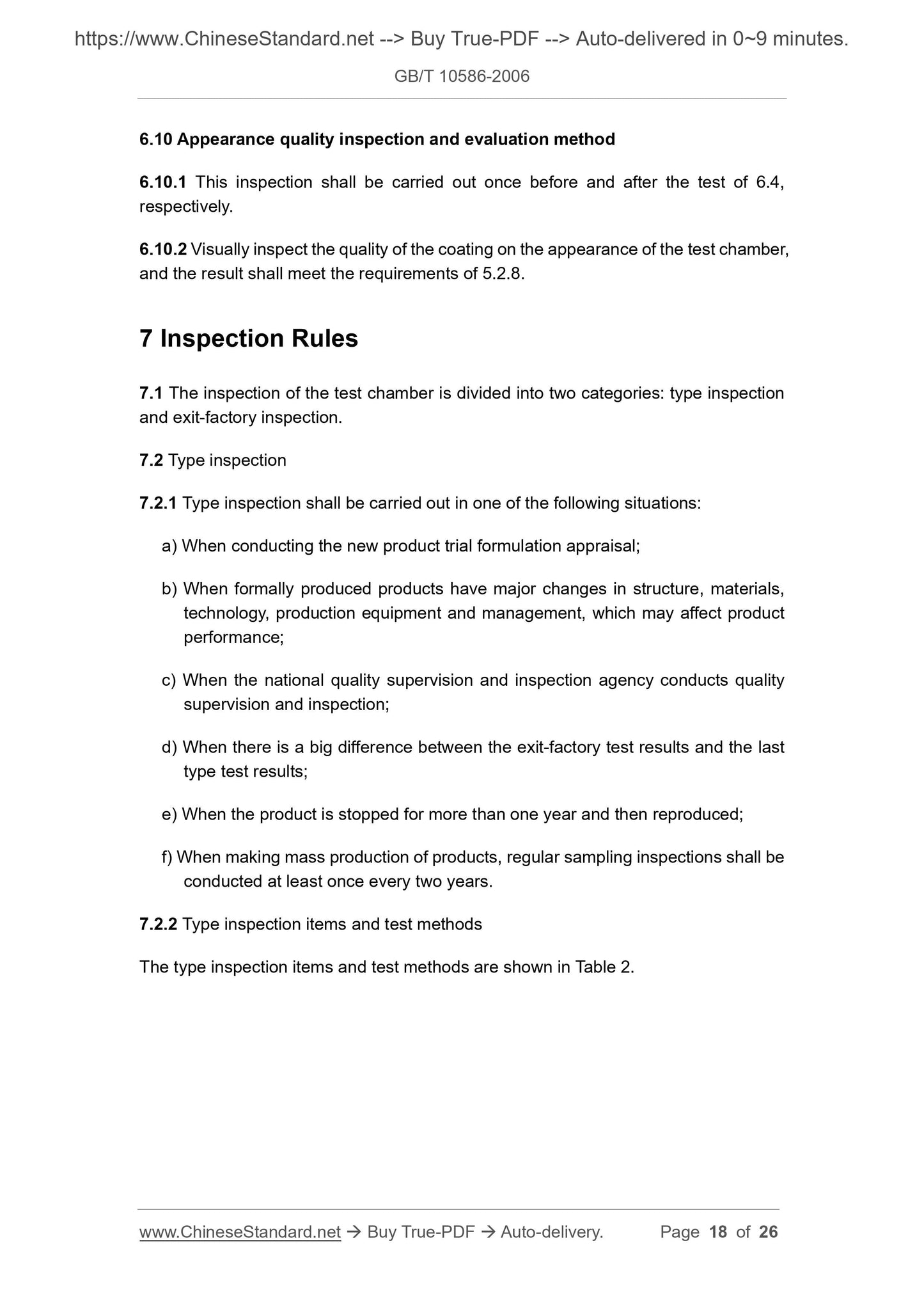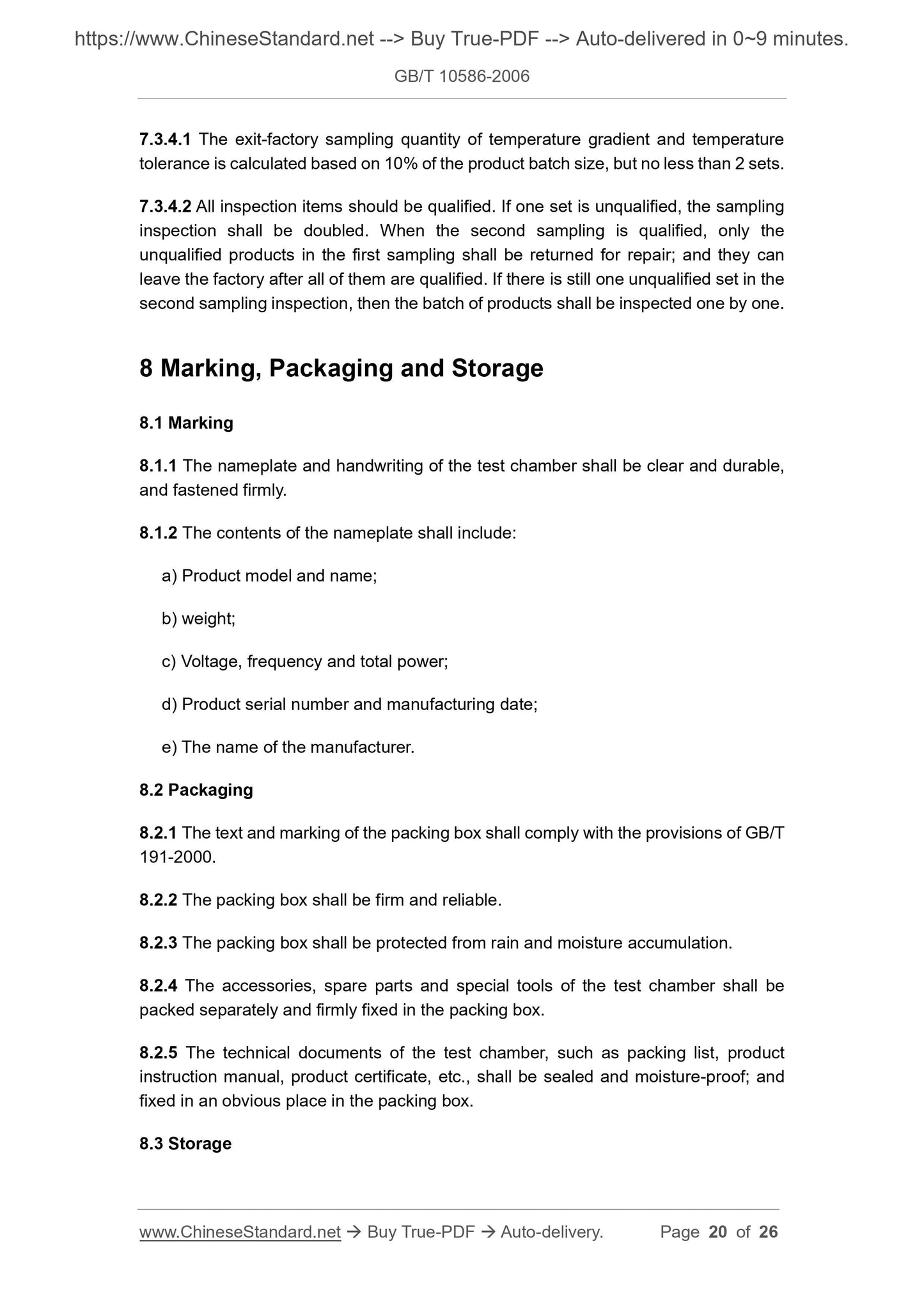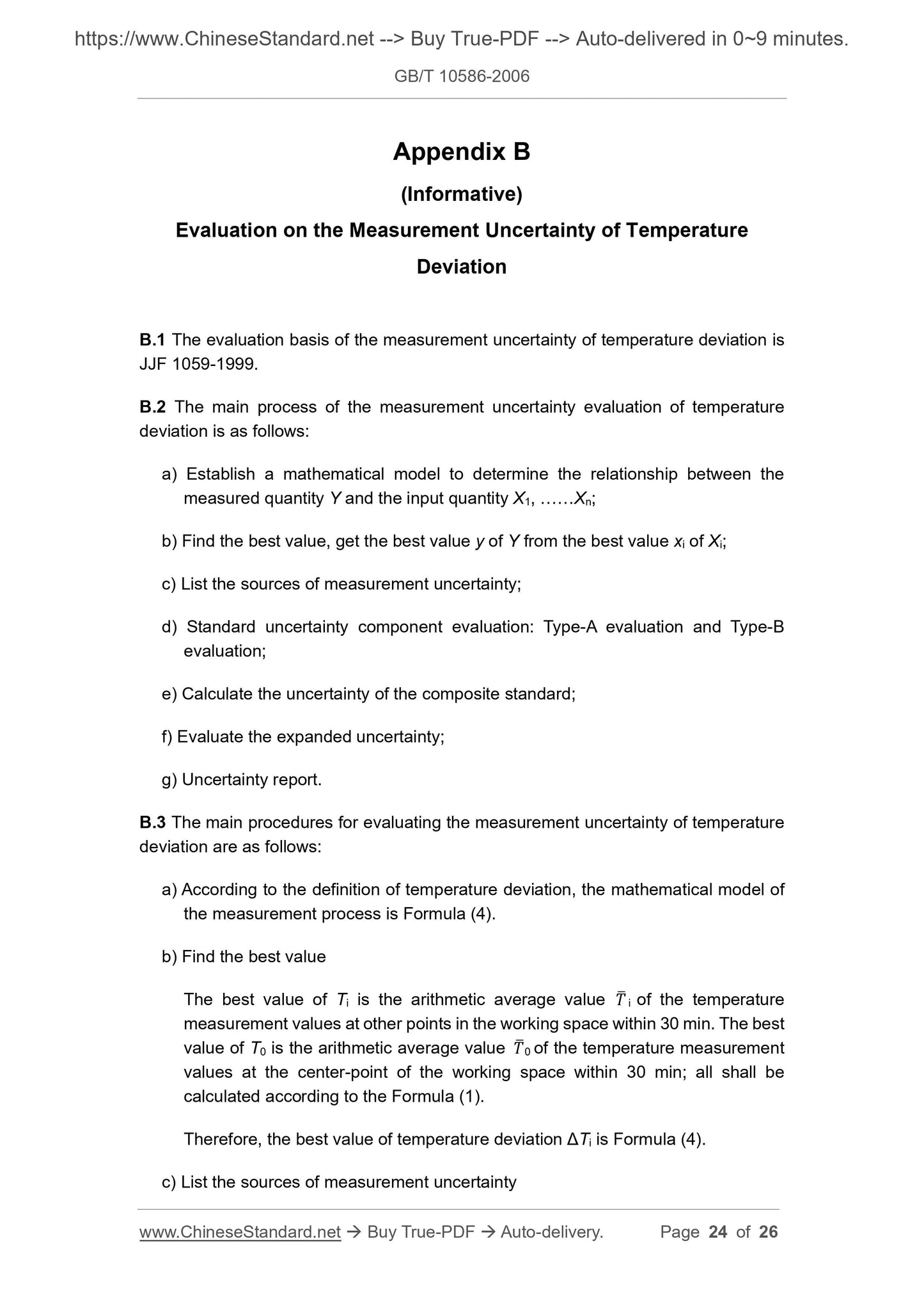1
/
of
11
www.ChineseStandard.us -- Field Test Asia Pte. Ltd.
GB/T 10586-2006 English PDF (GB/T10586-2006)
GB/T 10586-2006 English PDF (GB/T10586-2006)
Regular price
$225.00
Regular price
Sale price
$225.00
Unit price
/
per
Shipping calculated at checkout.
Couldn't load pickup availability
GB/T 10586-2006: Specification for damp heat testing chambers
Delivery: 9 seconds. Download (and Email) true-PDF + Invoice.Get Quotation: Click GB/T 10586-2006 (Self-service in 1-minute)
Newer / historical versions: GB/T 10586-2006
Preview True-PDF
Scope
This Standard specifies the terms and definitions, conditions of use, technicalrequirements, test methods, inspection rules and marking, packaging, and storage of
damp heat test chambers (hereinafter referred to as "test chambers").
This Standard is applicable to test chambers that conduct damp heat tests on electrical,
electronic and other products, parts and materials.
Basic Data
| Standard ID | GB/T 10586-2006 (GB/T10586-2006) |
| Description (Translated English) | Specification for damp heat testing chambers |
| Sector / Industry | National Standard (Recommended) |
| Classification of Chinese Standard | N04 |
| Classification of International Standard | 190.040 |
| Word Count Estimation | 17,183 |
| Date of Issue | 2006-04-03 |
| Date of Implementation | 2006-10-01 |
| Older Standard (superseded by this standard) | GB/T 10586-1989 |
| Adopted Standard | IEC 60068-3-5, NEQ; IEC 60068-3-6, NEQ |
| Regulation (derived from) | China Announcement of Newly Approved National Standards No. 5, 2006 (No. 92 overall) |
| Issuing agency(ies) | General Administration of Quality Supervision, Inspection and Quarantine of the People's Republic of China, Standardization Administration of the People's Republic of China |
| Summary | This standard specifies the terms and definitions heat chamber, conditions, technical requirements, test methods, inspection rules and signs, packaging and storage. This standard applies to electrical, electronic and other products, parts and materials for heat test chamber. |
Share
